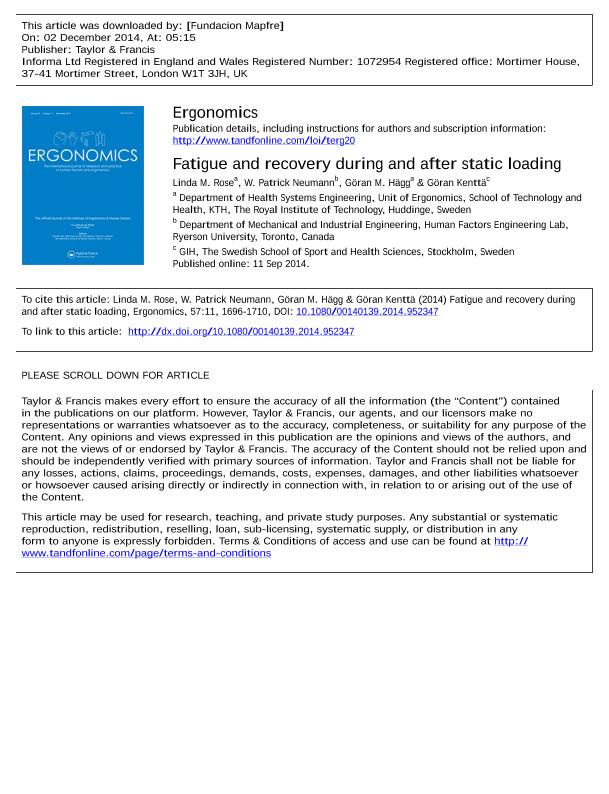Fatigue and recovery during and after static loading

Contenido multimedia no disponible por derechos de autor o por acceso restringido. Contacte con la institución para más información.
| Tag | 1 | 2 | Valor |
|---|---|---|---|
| LDR | 00000cab a2200000 4500 | ||
| 001 | MAP20140045594 | ||
| 003 | MAP | ||
| 005 | 20141203104158.0 | ||
| 008 | 141202e20140311esp|||p |0|||b|spa d | ||
| 040 | $aMAP$bspa$dMAP | ||
| 084 | $a875 | ||
| 245 | 0 | 0 | $aFatigue and recovery during and after static loading$cLinda M. Rose...[et.al] |
| 520 | $aSubjectively assessed endurance time (ET), resumption time (RT) and perceived discomfort, pain or fatigue (PD), and objectively measured maximum force-exerting capacity were investigated for varying loads and durations of a pushing task with two repeated trials. Beyond the main results quantifying how the load scenario affected ET, RT and PD, three additional results are of note: (1) although the maximum pushing force did not change between trials, shorter ET, longer RT and higher PD indicated accumulation of fatigue in Trial 2; (2) the PD ratings showed a trend with a linear increase during loading and a curvilinear decrease during recovery; and (3) the RT and the load level for different relative loading times were found to have an unexpected U-shaped relationship, indicating lowest fatigue at the intermediate load level. These results can be used to model a more sustainable and productive work-recovery ratio. | ||
| 773 | 0 | $wMAP20100019818$tErgonomics : the international journal of research and practice in human factors and ergonomics$dOxon [United Kingdom] : Taylor & Francis, 2010-$x0014-0139$g03/11/2014 Volumen 57 Número 11 - noviembre 2014 |

